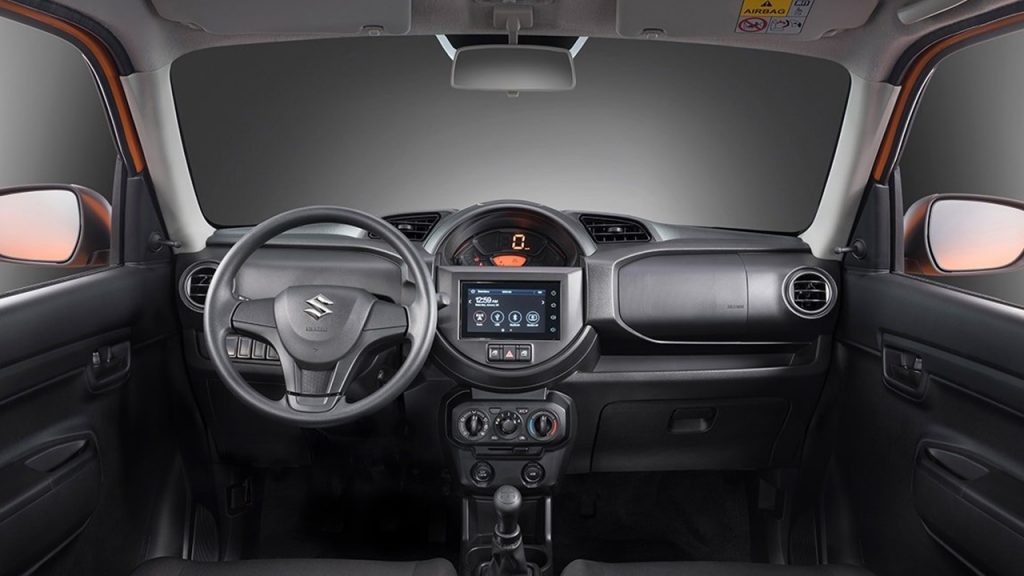When my editor gave me this topic, a colleague laughed immediately because he knew I am a fan of the Honda Brio and I’m still saving up for one. It’s the most mature looking of the bunch and it has the most powerful engine at its price point, which are the main factors that made me drool for it.
However, times have changed and Suzuki brought in another hatch but this time, it’s taller. Toyota, too, updated their bestselling small hatchback and with that, the three of them were caught in a Mexican stand-off. It’s the Suzuki S-Presso against the popular Toyota Wigo E and the Honda Brio S.
On the surface
As I’ve said earlier, I think the Brio is the most mature of the bunch and I’m sticking by it. The Wigo is a bit too sporty – if that’s what you call that new front design, while the S-Presso is your high school kid who’s too eager to be a grown up, just not for me.
Under the hood, the S-Presso and Wigo have the same displacement and cylinder count at 1-liter and 3 cylinders with 67hp and 90Nm of torque for the Suzuki, and 65hp and 89Nm of torque for the Toyota. The Brio has a 1.2-liter 4-cylinder engine that puts out 89hp and 110Nm of torque with all three mated to a 5-speed manual transmission.
The exterior appointments are a mix and match though. All have halogen headlights but the S-Presso doesn’t have the extra flair of LED DRLs. The Brio came up short with its non-LED taillights as the other two enjoyed LEDs back there while the Wigo was the only one that doesn’t have a high-mount stop lamp.
On the side, the Wigo E only has a turn signal on the headlights, while the S-Presso and Brio have an additional on the front fender. Also, the Brio is the only one with power-adjustable side mirrors among the three.
As for the wheels, only the Wigo enjoys alloy shoes while the other two have steel rims with plastic covers.
Mild interior
As expected at this price point, the interior of all three vehicles are very plain. The Wigo is the most plasticky among the three, with the Honda and Suzuki tied on interior material feel.

In terms of design, the S-Presso tried to be unique by putting the gauge cluster at the center of the dash, above the 7-inch infotainment screen it has. It’s off-putting for me since it should always be in front of the driver.
The Brio and Wigo played it safe with their basic radios, but the Brio’s LCD display for the aircon and power-adjustable side mirrors give it an edge. The Wigo, unfortunately, doesn’t even have an adjustment stem for its side mirror like the S-Presso. You’d have to roll your windows down and reach for the mirrors like it’s 1980.
Tech inside
All three small hatchbacks come with front airbags and ABS as standard, with the Wigo adding a couple of rear sensors to that. The Brio doesn’t have rear sensors, but it does come with an engine immobilizer and remote key.
Coming out on top in this category, surprisingly, is the S-Presso. Aside from the standard, it has rear sensors, immobilizer, remote key, and ISOFIX tethers.
The underdog wins
The S-Presso is priced at P518,000, followed by the Wigo E at P568,000 and the Brio S MT is at P598,000. Considering the price, and yes because I’m in love with it, I thought the Brio would come out with a win by a good margin. I thought the lower priced cars, especially the S-Presso, would lack a lot of features just to meet their price points. Fortunately, that’s not the case.
The Wigo E is a popular choice because if you just need a car to go from A to B without any frills, it’s the best option considering its price point. However, Suzuki showed everyone that you can cut corners and pricing but still have a bit more for your car.

